The purpose of the event—primarily aimed at students expecting to graduate from colleges and technical schools in 2026—was two-fold: to support companies in their hiring, and to help students in their search for jobs.
A similar seminar had been held in Osaka some nine days earlier, on October 5. Combined, the two events enjoyed the participation of 89 companies and organizations staffing individual booths―46 in Tokyo and 43 in Osaka―a record high since the event was launched in 2006. The total number of visitors to the two sites was 433: 223 in Tokyo and 210 in Osaka.
One of the companies participating for the first time this year at both sites was the Non-Destructive Inspection Co., Ltd. (NDIC), a “behind-the scenes” company important in securing the soundness of not only nuclear energy facilities but also aging societal infrastructure.
At the event, a representative of the company said that students were overwhelmingly ignorant of NDIC’s existence, including its technological capabilities and the need for them. He said that he wanted to make students more aware of those matters, adding his belief that those majoring in various academic fields might find interest in his company.
For example, NDIC’s technology is used to detect flaws in rails for the Tokaido Shinkansen bullet train, which recently marked its 60th anniversary of operation, having begun service on October 1, 1964. The company representative said that he wanted students at the event to realize that there was a need for such work, and that his firm had the resources and technologies to meet it. He showed clearly NDIC’s enthusiasm for participating in the Nuclear Industry Seminar, this year marking its debut there.
Also, there was a representative from the Tokyo Electric Power Co. (TEPCO) said that the company were looking for people who demonstrate independence, passion, and a multi-faceted approach to their work. He referred to what he called his company’s “substantial training system,” saying that in light of the attention directed to restarting the Kashiwazaki Kariwa Nuclear Power Plants, TEPCO was striving to enhance basic skills at the entry level and beyond, including conducting on-site tours and encouraging the acquisition of new skills in each sector.
Meanwhile, the Nuclear Regulation Authority of Japan (NRA) took part in the event this year again, having participated annually as an administrative organization. Its representative talked about NRA’s various efforts to attract new staff to its workforce, such as through visits to public offices. Its situation illustrates the severe human-resource situation in today’s Japan, where even public-service organizations struggle to meet hiring quotas.
At its booth this year, the NRA posted a schedule of the frequent explanatory sessions it planned to hold. Besides focusing on the hiring of new graduates, it hoped to attract experienced personnel as well. In terms of career paths, the NRA is trying to enhance its training systems so as to upgrade its employees’ skills once they have been hired, not merely teaching them ordinary tasks.
The Nuclear Waste Management Organization of Japan (NUMO) was another participating organization this year; indeed, it has taken part in the seminar from its beginning 18 years ago. According to its site, NUMO “engages in the mission of ensuring the long-term safe management of high-level radioactive waste,” or HLW.
At this year’s Nuclear Industry Seminar, the representative from NUMO, when interviewed, noted that she felt that too many students were still hearing about the “geological disposal” of HLW for the first time, although it has been in the news for a while.
Now that literature investigations have been carried out in Suttsu Town and Kamoenai Village, both in Hokkaido, about their suitability as HLW disposal sites, and that some progress is being seen in the area of geological disposal, she said that NUMO was hoping to attract people with a “professional consciousness” who could contribute to the winning the trust of regional communities.
To obtain understanding about its long-term disposal business, NUMO also posts videos on the Internet featuring young celebrities. It also actively holds events and conduct classes at schools, with the purpose of informing and enlightening younger people.
Another participant in this year’s event was the Kanadevia Corporation, formerly known as Hitachi Zosen (it was just renamed in October). At its booth, it emphasized the new brand’s concept of “finding harmony between humanity and nature through the power of technology.” The company’s new name is an amalgam of the Japanese verb kanaderu, meaning “to play music (in harmony),” and the Latin noun via, meaning “way.”
While the firm primarily deals with the overseas transportation of spent fuel and the manufacturing of nuclear-related storage containers, it is also trying to increase corporate value by engaging more broadly in the area of environmental protection. Its booth this year mainly drew attention from engineering students.
In general, while the number of visitors to this year’s Nuclear Industry Seminar was up slightly from the year before, many of the students this time seemed to be more enthusiastic about the nuclear industry than those of previous years. For example, groups of science students were seen making the rounds of the booths of several companies, eagerly listening to explanations, and asking questions about such topics as nuclear fusion and small modular reactors (SMRs).


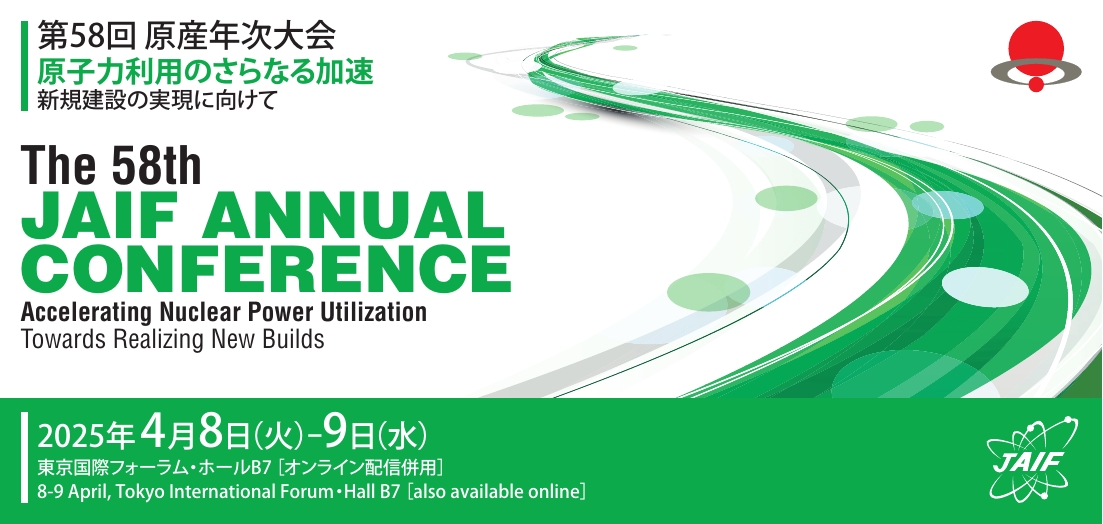
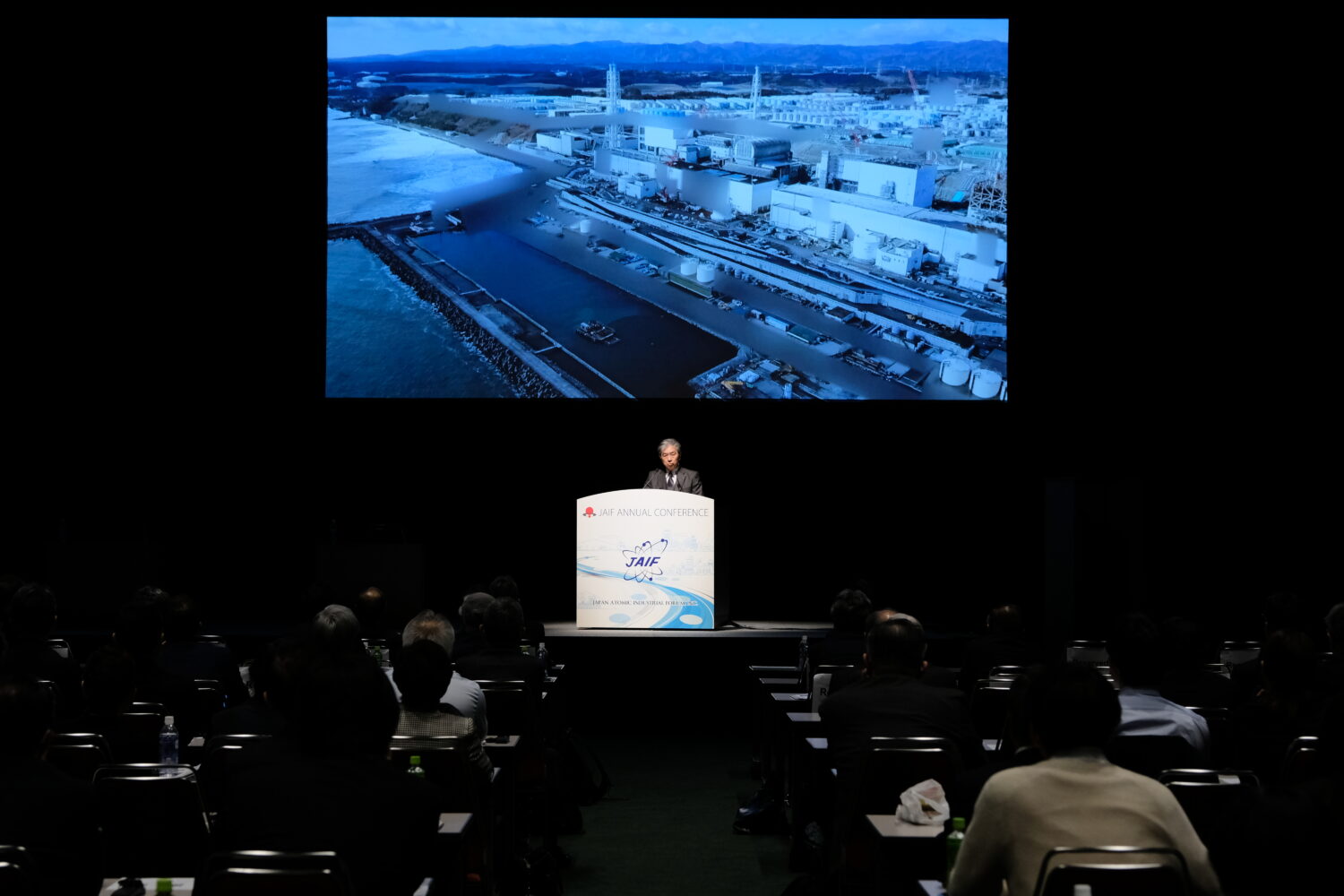

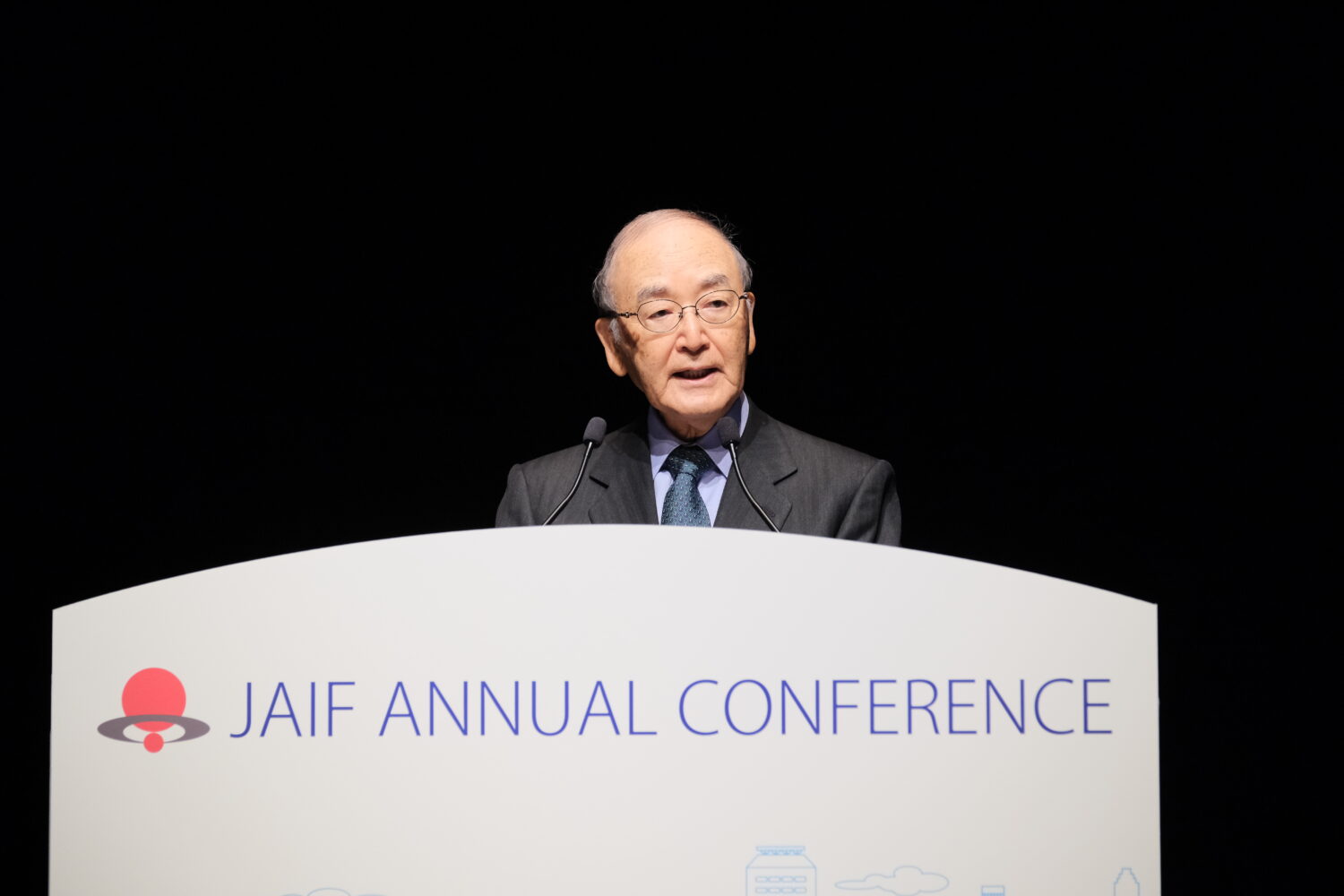

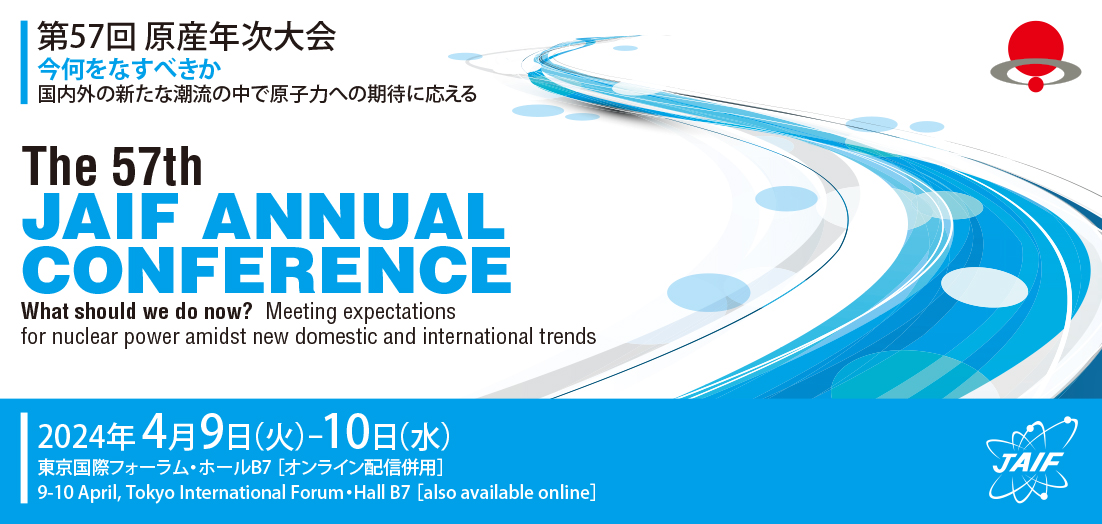
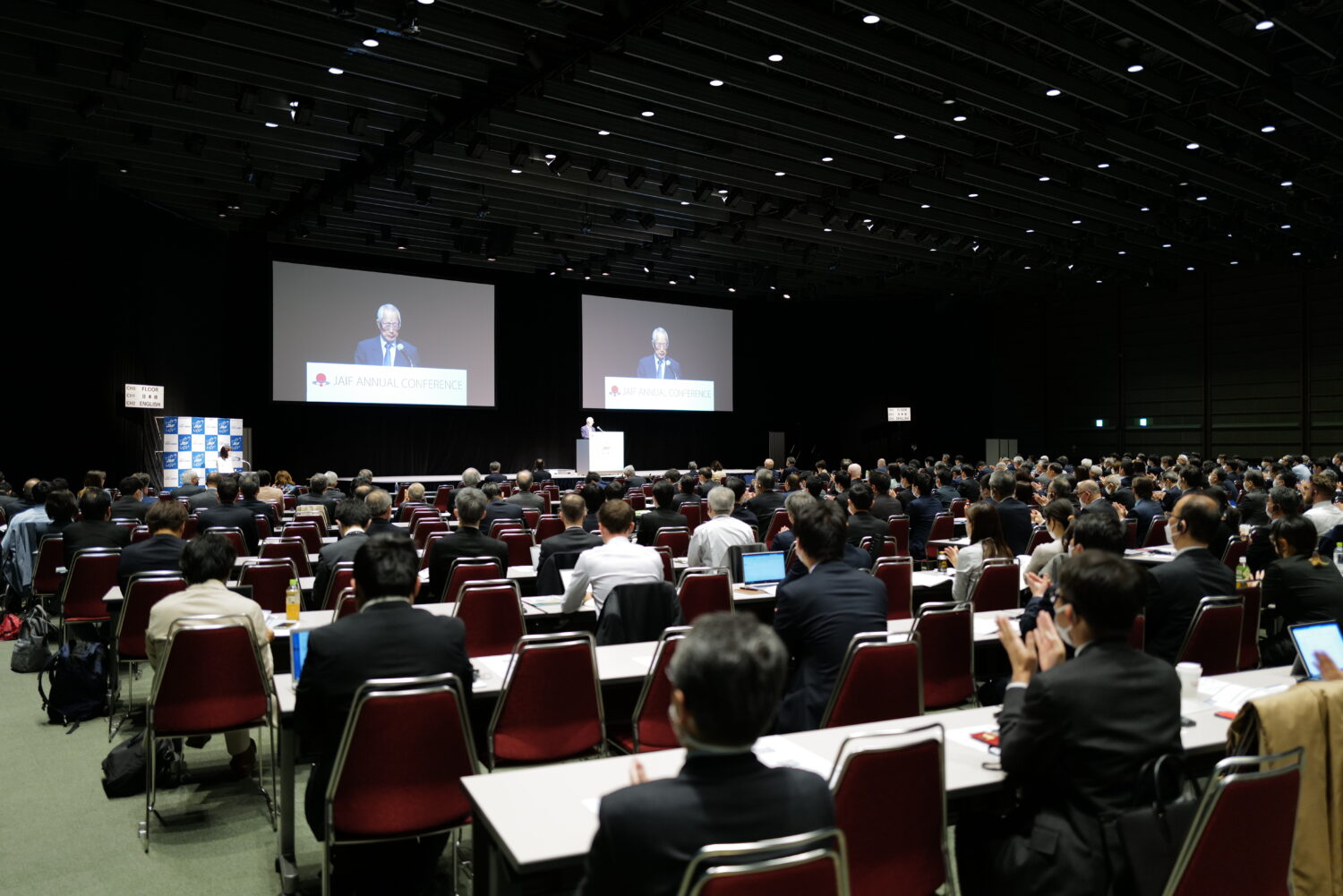
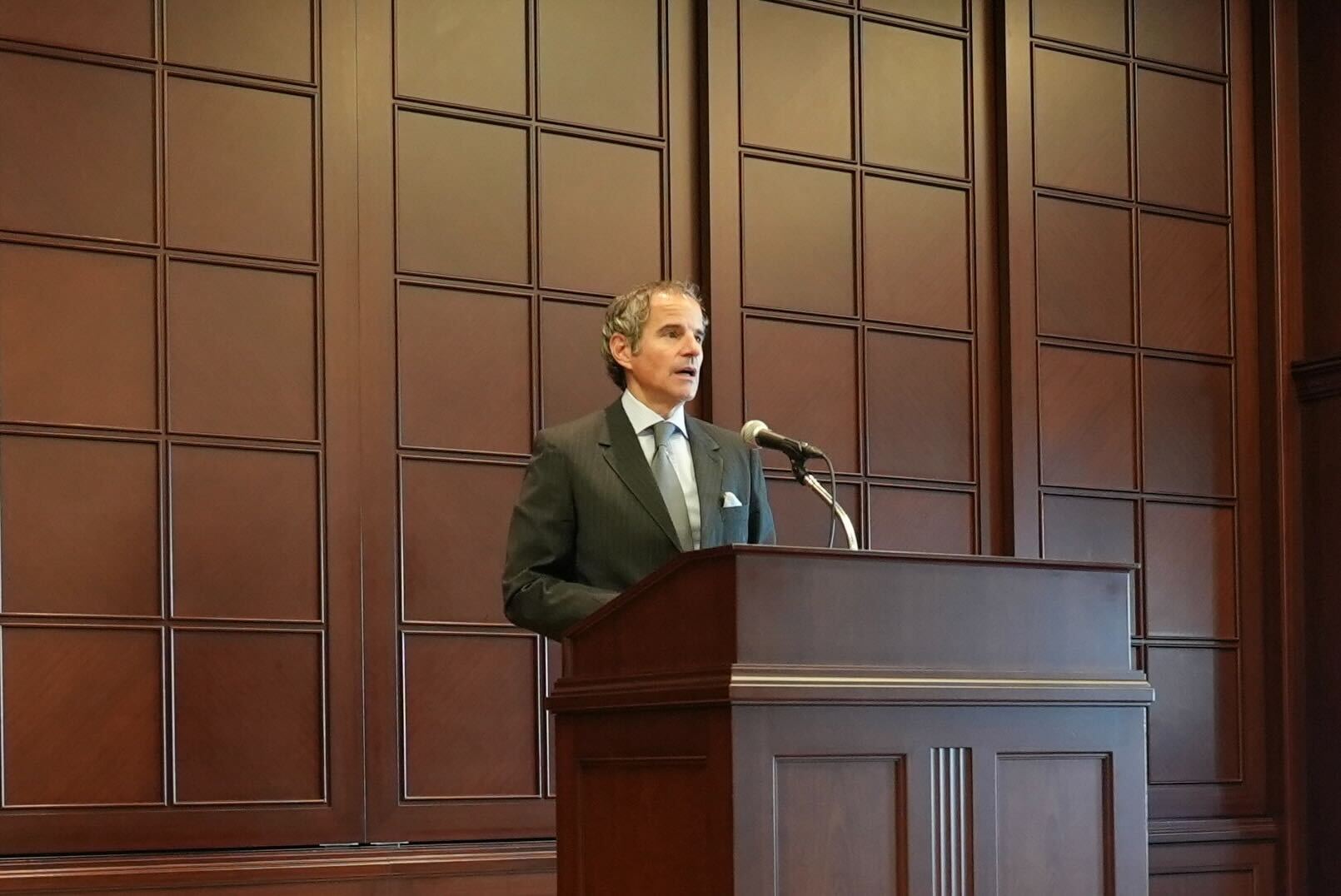
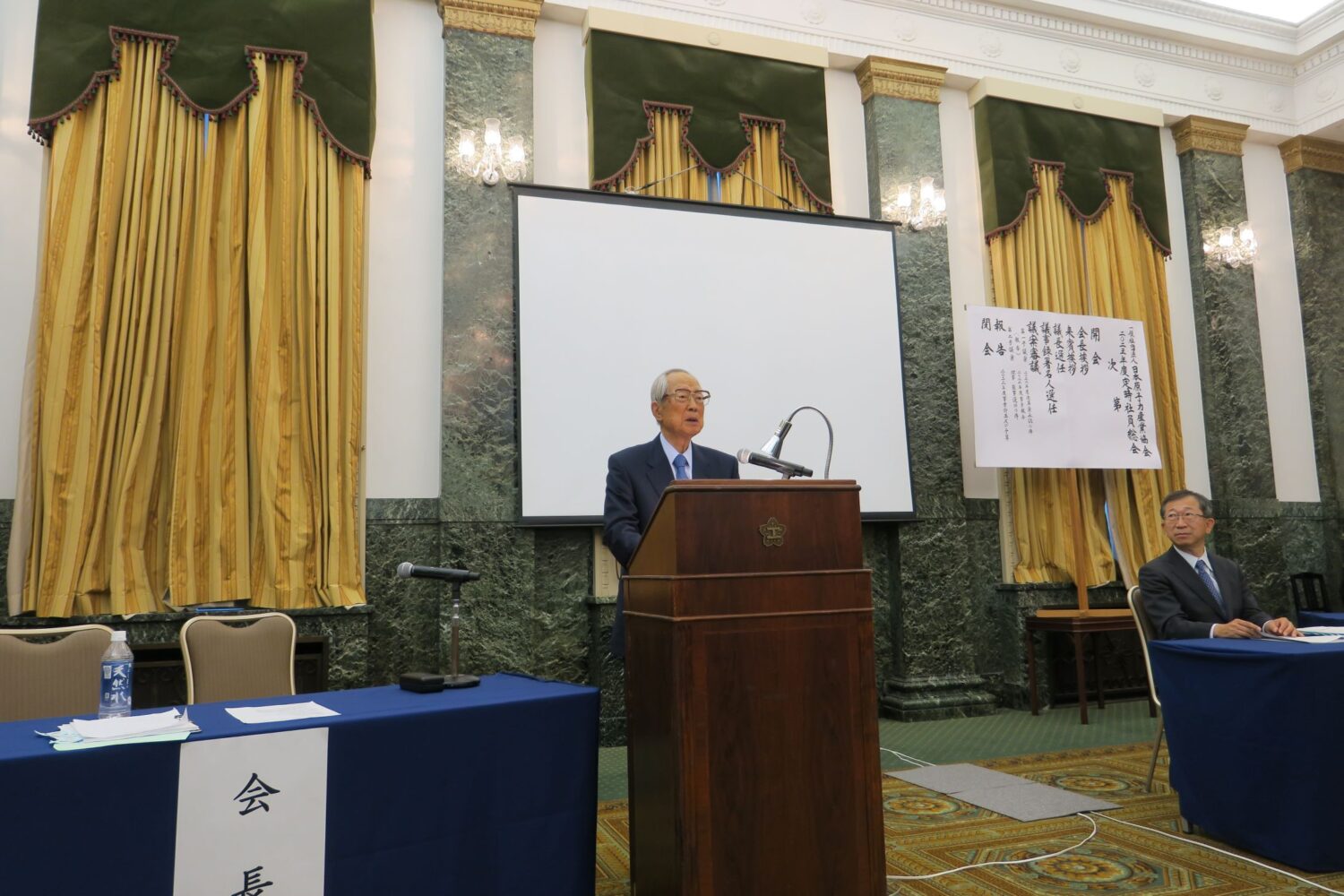
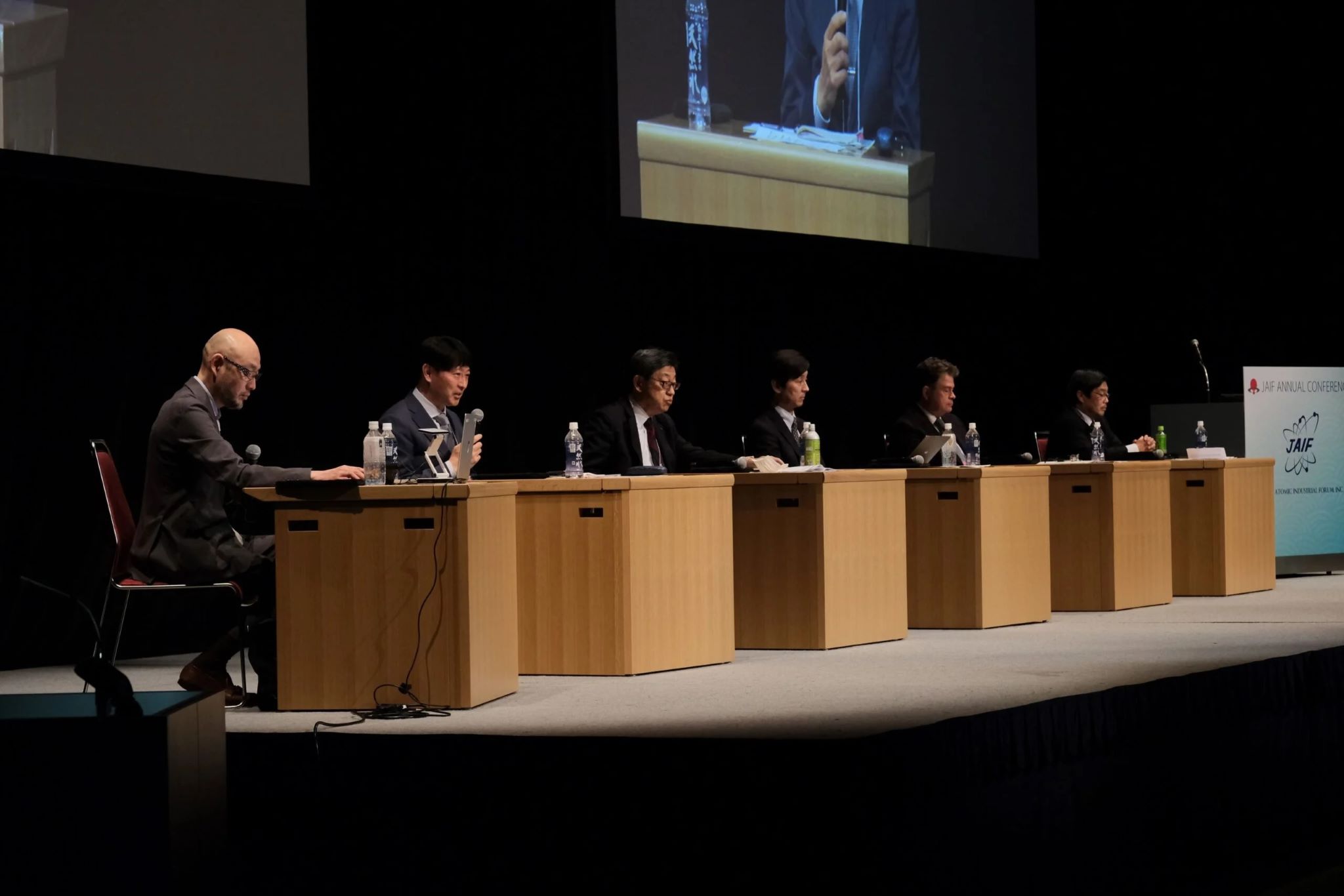

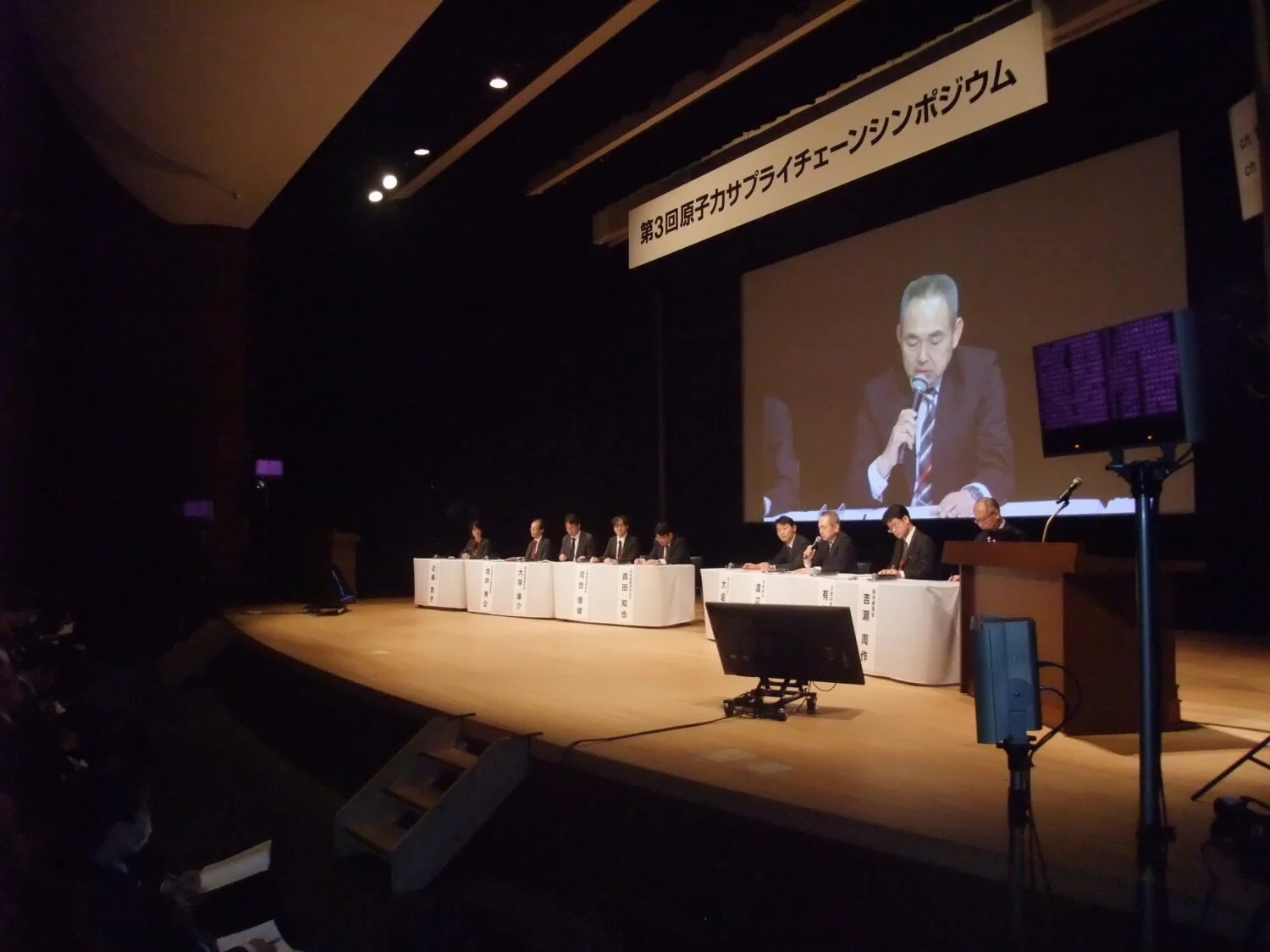
-1.png)







